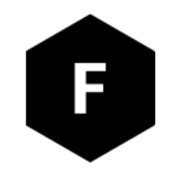
FMP

Direxion S&P 500 High minus Low Quality ETF
QMJ
AMEX
Inactive Equity
The investment seeks investment results, before fees and expenses, that track the S&P 500® 150/50 Quality 0.30% Decrement Index. The fund, under normal circumstances, invests at least 80% of its net assets (plus borrowing for investment purposes) in securities that comprise the Long Component of the index or shares of exchange-traded funds (ETFs) on the Long Component of the index. The index consists of a portfolio that has 150% long exposure to the S&P 500® Quality Index (the Long Component) and 50% short (or inverse) exposure to the S&P 500® Quality - Lowest Quintile Index (the Short Component). It is non-diversified.
68.44 USD
-0.7385 (-1.08%)
DuPont Analysis
The DuPont analysis, pioneered by the DuPont Corporation, offers a structured approach to assessing fundamental performance. It involves breaking down the return on equity (ROE) into various components, aiding investors in comprehending the factors influencing a company's returns.
ROE = Net Income / Average Total Equity
ROE = (Net Income / Sales) * (Revenue / Average Total Assets) * (Average Total Assets / Average Total Equity)
The company's tax burden is (Net income ÷ Pretax profit). This is the proportion of the company's profits retained after paying income taxes. [NI/EBT] The company's interest burden is (Pretax income ÷ EBIT). This will be 1.00 for a firm with no debt or financial leverage. [EBT/EBIT] The company's operating income margin or return on sales (ROS) is (EBIT ÷ Revenue). This is the operating income per dollar of sales. [EBIT/Revenue] The company's asset turnover (ATO) is (Revenue ÷ Average Total Assets). The company's equity multiplier is (Average Total Assets ÷ Average Total Equity). This is a measure of financial leverage. Profitability (measured by profit margin) Asset efficiency (measured by asset turnover) Financial leverage (measured by equity multiplier)